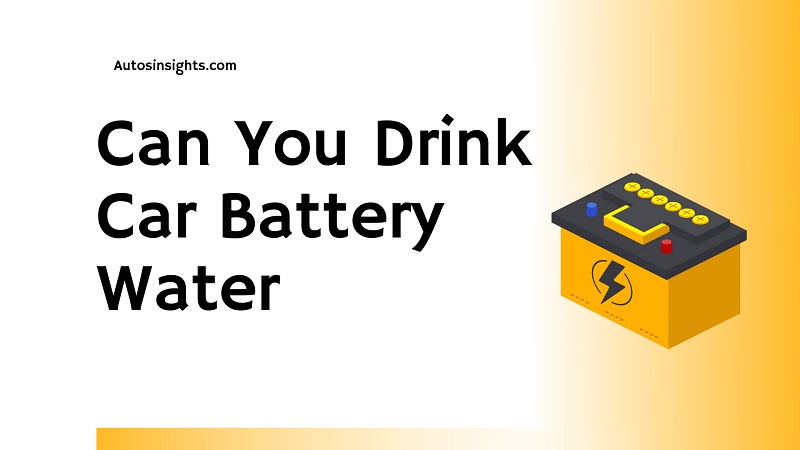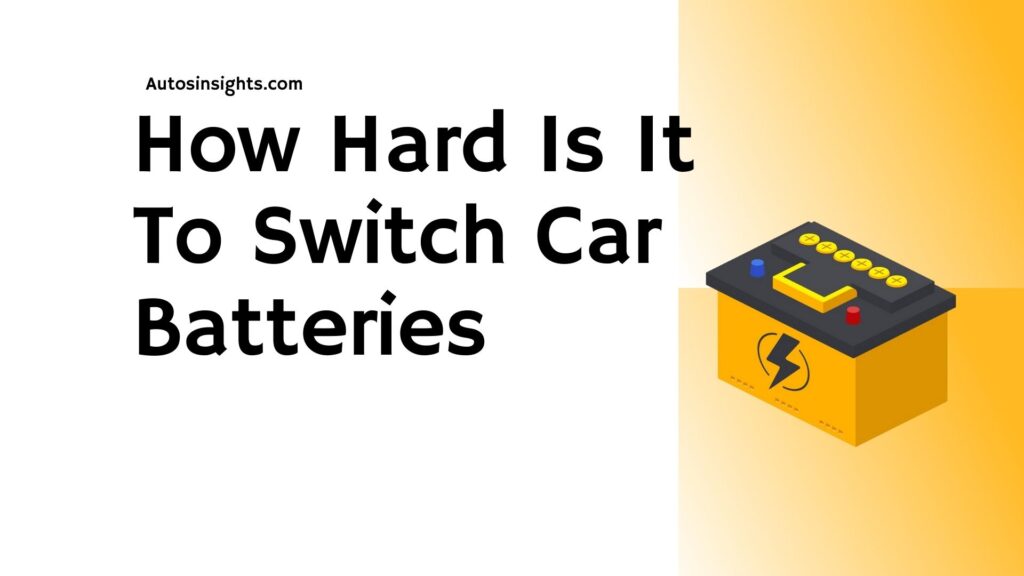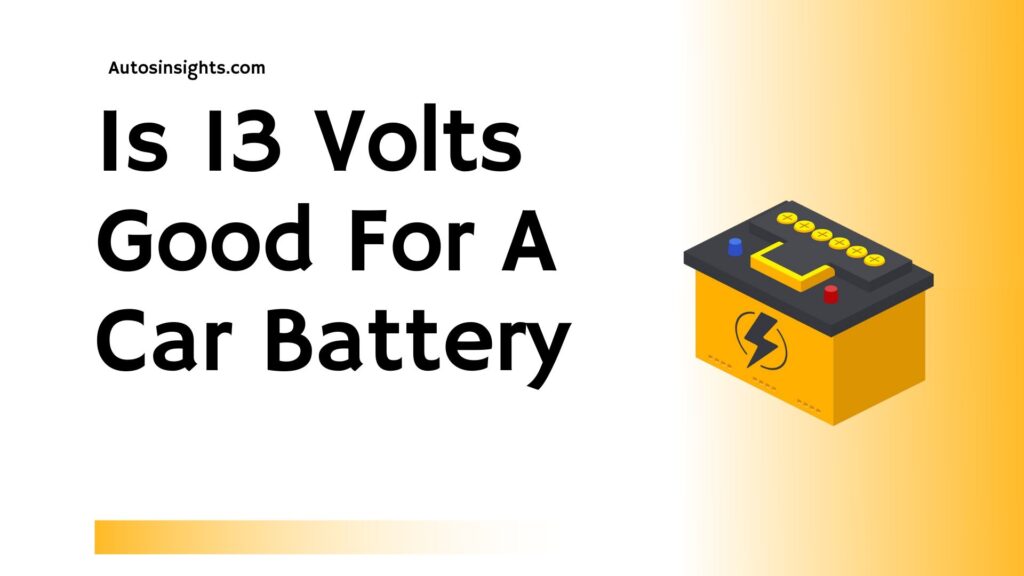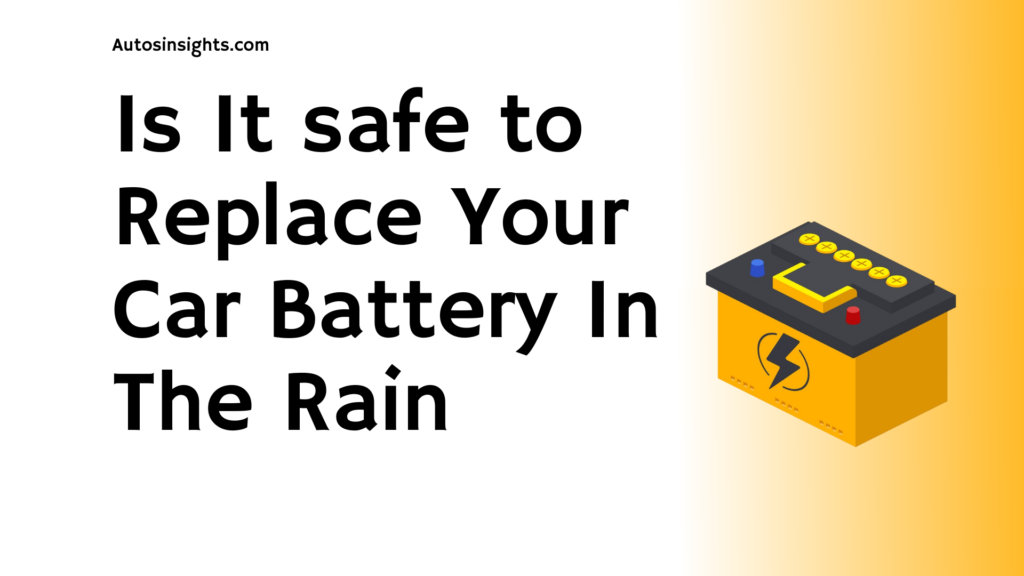Yes, there are several ways to kill a car battery, but most involve depriving the battery of a charge. Some ways to do this include:
Overcharging the battery: If a car battery is charged too much, it can be damaged or even destroyed. It might happen if the battery is charged too fast or too long on high voltage.
Disconnecting the battery: Removing the battery from the car, or disconnecting the positive and negative terminals, can also cause the battery to die. This is because the battery will be unable to receive a charge and eventually run out of power.
Drain the battery: Electrical devices, such as the headlights or the radio, can drain the battery without the engine running. When this happens often, the battery may become too weak to start the car.
It is generally best to avoid intentionally trying to kill a car battery. Instead, make sure to properly maintain and care for your battery to keep it in good working condition. This includes regularly checking the battery’s charge level and ensuring it is charged properly.
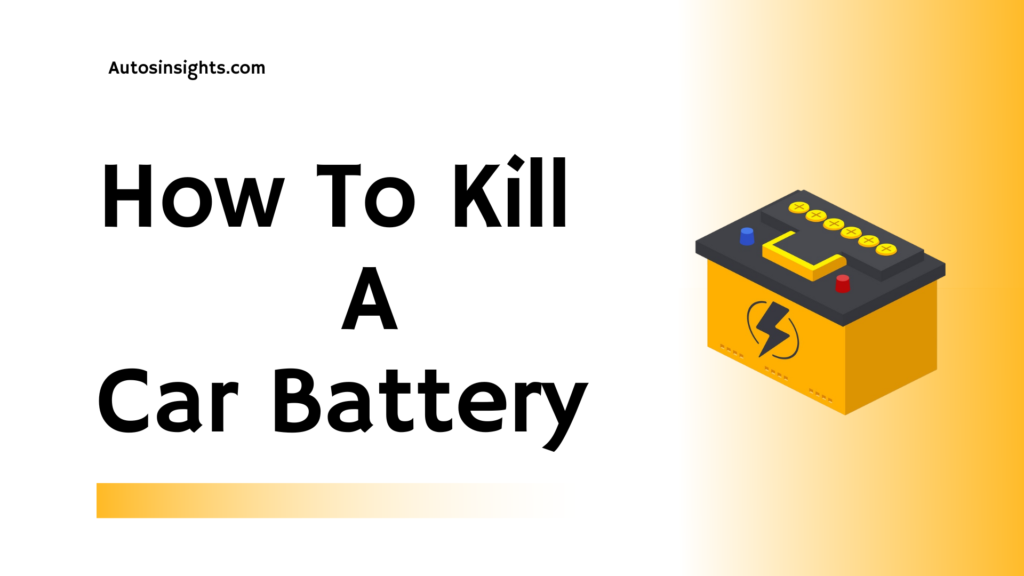
How to kill a car battery cell
It is not recommended to try to kill a car battery cell. Car batteries are essential for starting and operating a vehicle, and damaging or destroying a battery can be dangerous and expensive.Additionally, attempting to damage a battery cell can be dangerous, as batteries contain chemicals that can be hazardous if handled improperly.
What is the fastest way to kill a battery?
The fastest way to kill a battery is to overcharge it. Overcharging a battery can cause it to become hot, leading to its internal components breaking down and becoming damaged.
This can happen if the battery is left on a charger for an extended time or if it is charged at too high of a voltage.
Overcharging a battery can also cause it to release hydrogen gas, which can be explosive if it builds up in a confined space.
Dead car battery
A dead car battery is a battery that can no longer hold a charge and cannot provide the electrical power needed to start a vehicle’s engine.
This can happen for several reasons, including leaving the lights on, frequently using short trips that don’t allow the battery to recharge fully, and simply due to age.
Dead car batteries must be replaced or jump-started using another car or a portable jump-starter.
It’s also a good idea to regularly maintain and care for your car battery to prevent it from dying.
Car battery discharge solution
There are a few ways to fix a dead automobile battery. Use another vehicle or a portable jump-starter to jump-start the battery.
Connect the dead battery’s positive terminal to the good battery’s positive terminal and the negative terminal to the car’s ground. It will start the engine.
Another option is to charge the battery using a battery charger.
This involves connecting the charger to the battery and allowing it to charge for several hours. On the other hand, if the battery has lost too much of its capacity, it could need to be replaced.
Can an alternator drain a battery when the car is off
Yes, an alternator can drain a car battery when the car is turned off.
If the car’s alternator or other electrical components fail, it happens. If the alternator isn’t correctly charging the battery, it can discharge.
Parasitic drain occurs when a gadget or component in the car draws electricity from the battery even while the car is off.
It’s always a good idea to have your car’s electrical system checked by a mechanic if you suspect a problem.
What can Kill a car battery when the car is off
Several things can drain a car battery when the car is turned off, such as a faulty alternator, a problem with the car’s electrical system, a light that was left on, or a device that is drawing power from the battery, such as a GPS unit or an alarm system.
In some cases, a car battery can also be drained by a natural process called “self-discharge,” which occurs when it loses its charge over time.
Here are a few other common causes of a drained car battery:
- A car that is not driven regularly, such as a seasonal or classic car, can develop a discharged battery over time due to self-discharge.
- The battery’s terminal can become loose or corroded, prohibiting it from charging correctly and leading to its depletion.
- A battery that is unhealthy may discharge more rapidly than a battery that is in good condition.
- Temperatures that are extremely hot or cold can have an effect on the functioning of a battery and lead it to drain more quickly.
- An alternator failure can cause a battery to lose charge because it charges the battery when the automobile is operating.
- If you are experiencing a drained car battery, diagnosing and addressing the problem as soon as possible is important to avoid being stranded.
- In some cases, a simple jump-start may be enough to get your car back on the road, but if the problem persists, you may need to have your battery and electrical system checked by a professional.
How to install a kill switch on a car battery
To install a kill switch on a car battery, you will need the following tools and materials:
⦁ A kill switch kit, which should include the switch, wiring, and necessary connectors
⦁ A drill and drill bits
⦁ A screwdriver
⦁ Electrical tape
⦁ Wire stripper
⦁ Pliers
Locate the battery of your car. It is found either in the trunk or beneath the car hood. Using a wrench, detach the cable connecting the battery’s negative terminal to the rest of the battery.
This will prevent electrical shock or short circuits while working on the battery.
Mount the kill switch to a convenient location, such as the dashboard or near the steering wheel.
Drill holes for the mounting screws, then use them to fasten the switch.
Strip the wires of the kill switch kit using the wire stripper.
Connect the wires of the kill switch to the battery. Positive terminals of a car battery are identified with “+” and negative terminals with “-.” Make sure you connect the right wires.
Make sure there are no electrical shorts or other problems by using the electrical tape to secure the connections.
Test the kill switch by turning it on and off. If it functions properly, you can reconnect the battery’s negative terminal using the wrench.
It is important to note that a kill switch should only be used as a last resort in an emergency.
To disable a car should not be your first choice. Additionally, using a kill switch can cause damage to your car’s electrical system if it is not installed properly.
It is highly recommended that you seek the advice of an experienced mechanic if you are unclear how to install a kill switch.
How long does it take to kill a car battery?
A car battery will typically last for several years, but its lifespan can vary depending on some factors, such as the type of battery, the climate it is used in, and how it is maintained.
A car battery should last for at least four or five years, but it can die sooner if it is not properly maintained or frequently used in a very cold or hot climate.
A car battery dies suddenly and unexpectedly. You may be driving along and suddenly lose power, or you may try to start your car and find that it won’t turn over.
In some cases, a dead battery may cause other electrical systems in the car to malfunction or fail, so it is important to address the problem as soon as possible.
Using another automobile or a portable jump starter, you may jump-start a dead car battery.
If it does not work, you will need a new battery for your car. A professional mechanic or handy DIYer with the right tools and knowledge can do this relatively easily.
It is a good idea to check your car battery regularly to ensure it is still in good working condition. This can help you avoid the inconvenience and potential danger of a dead battery while on the road.
I will also tell you how not to kill a car battery, so keep reading this article :
How to not kill a car battery
One way to avoid killing your car battery is to make sure your car is driven regularly so the battery stays charged. It’s also a good idea to avoid using too many electrical accessories when the engine is off and to make sure your car’s charging system is in good working order.
After keeping your car for a long time, detach the battery or use a battery tender.
Finally, regularly check the condition of your battery and replace it if it is old or no longer holding a charge.
Here are some additional tips to avoid killing your car battery:
⦁ Avoid short trips: Short trips can prevent your car’s battery from fully charging, leading to premature battery failure. Try to combine errands and take longer trips whenever possible.
⦁ Keep your battery clean: A dirty battery can decrease its ability to hold a charge, so be sure to clean the battery terminals and surrounding areas regularly.
⦁ Avoid using high-power electrical accessories: Using high-power electrical accessories, such as a car stereo or heated seats, can drain your battery quickly. Try to use these sparingly, and avoid using them when the engine is off.
⦁ Maintain the health of your car: A car that has undergone regular maintenance is less likely to experience battery issues. Regularly check and replace worn-out belts, hoses, and other parts that can affect your car’s charging system.
⦁ Utilise a battery tender: if you keep your automobile for a long time. This will help prevent the battery from discharging and can extend its life.
How cold does it have to be to kill a car battery?
Many factors can affect a battery’s performance, such as its age and condition, the type of battery, and the car it is in.
⦁ Car batteries can struggle at temperatures below freezing (32°F or 0°C)
⦁ Cold weather can cause car batteries to lose their charge more quickly
⦁ It’s best to keep your car in a garage or sheltered area to protect the battery from the cold
⦁ Make sure your battery is in good condition and has a full charge before heading out in cold weather
⦁ Consider having your battery tested by a mechanic if you’re concerned about its performance in the cold
⦁ Keep a set of jumper cables, a phone charger, and a spare tire in your car in case of emergencies
However, it’s important to remember that car batteries can lose their charge more quickly in cold weather, so it’s a good idea to make sure your battery is in good condition and has a full charge before heading out in cold temperatures.
If you’re concerned about your battery’s performance in the cold, consider having it tested by a mechanic to make sure it can provide enough power to start your car.
In addition, it’s always a good idea to keep a set of jumper cables in your car in case your battery dies, as well as a phone charger and a spare tire in other emergencies.
How to wire a car battery kill switch
To wire a car battery kill switch, you will need to follow these steps:
⦁ Disconnect the negative terminal of the battery. Here is the terminal with the black cable attached or a symbol that looks like a “-.”
⦁ Locate a suitable location for the kill switch. This could be under the dashboard, in the trunk, or under the hood.
⦁ Install the kill switch by drilling a hole and mounting it securely in the chosen location.
⦁Connect the input terminal of the kill switch with a wire that is run from the negative terminal of the battery. This terminal will be connected to the battery at all times.
⦁ Run a second wire from the output terminal of the kill switch to the starter motor or the starter solenoid. This terminal will be connected to the starter when the switch is in the “on” position.
⦁ Test the kill switch to ensure that it works properly. When the toggle switch is in the “off” position, it is not expected that the engine will start. The ignition switch needs to be in the “on” position for the car engine to start in the usual manner.
⦁ If everything is working properly, secure all the wiring with wire ties and tape, and reconnect the battery’s negative terminal.
It’s important to note that installing a kill switch can be dangerous if not done properly. If you are uncomfortable working on your car’s electrical system, it’s best to have a professional do the job for you.
Conclusion
Ok, I hope now you better know how to kill or not to kill a car battery.
I explained this to you because I am an experienced mechanic and have worked in my friend’s garage for five years as a mechanic in Chicago.
If you have any further questions after reading this post, please leave them in the comments section; I will do my best to address them all.
Related Articles:
- How To Clean A Car Battery Corrosion
- What Happens When You Shake A Car Battery
- Is 13 Volts Good For A Car Battery
- How Long Does It Take To Change A Car Battery
- Does Driving Charge Your Car battery
- Car Battery Doesn’t Fit In A Tray
- How To Drain Car Battery
- Car Battery Dies After Getting Gas
- Can A Bad Battery Cause Low Voltage
